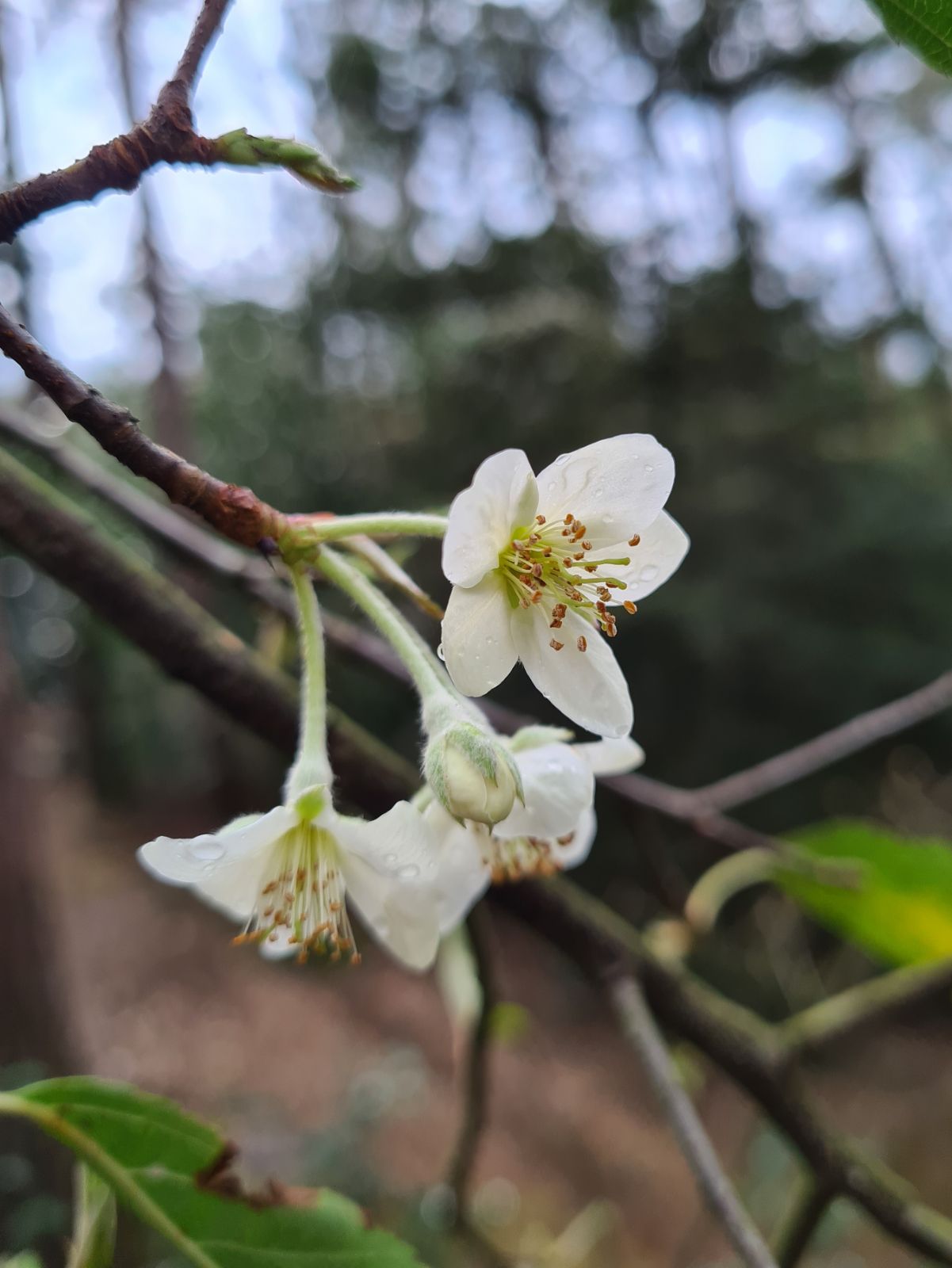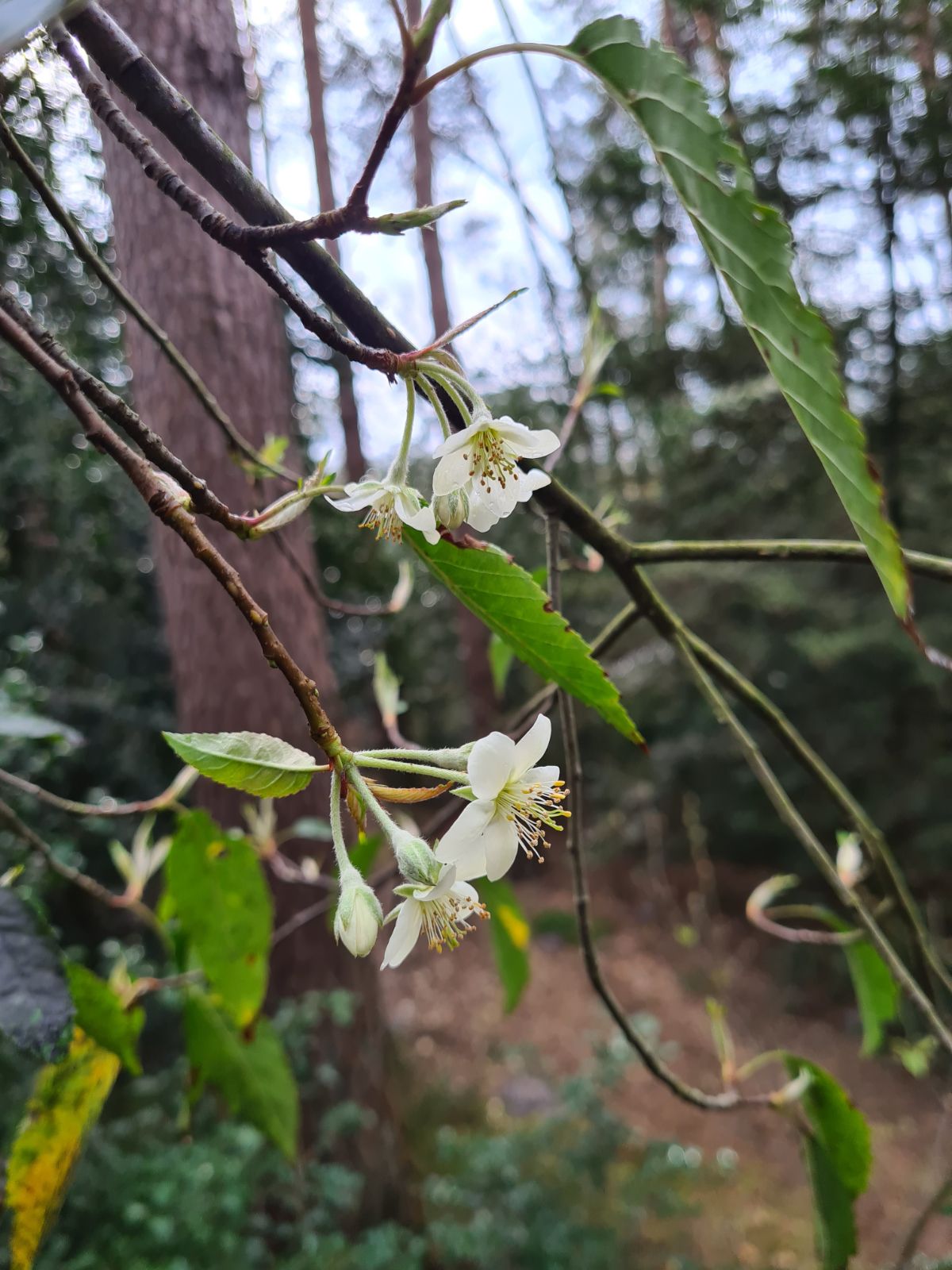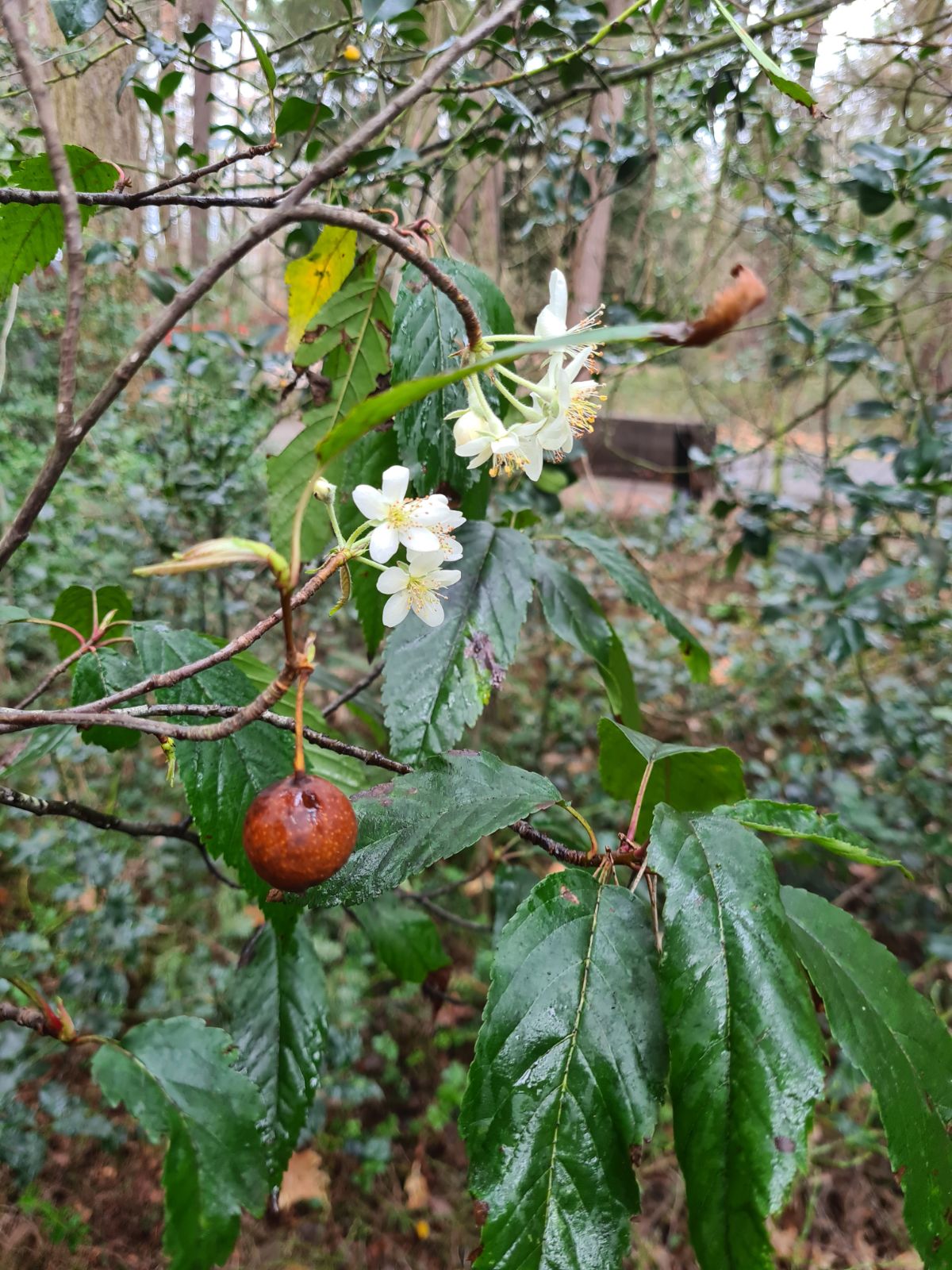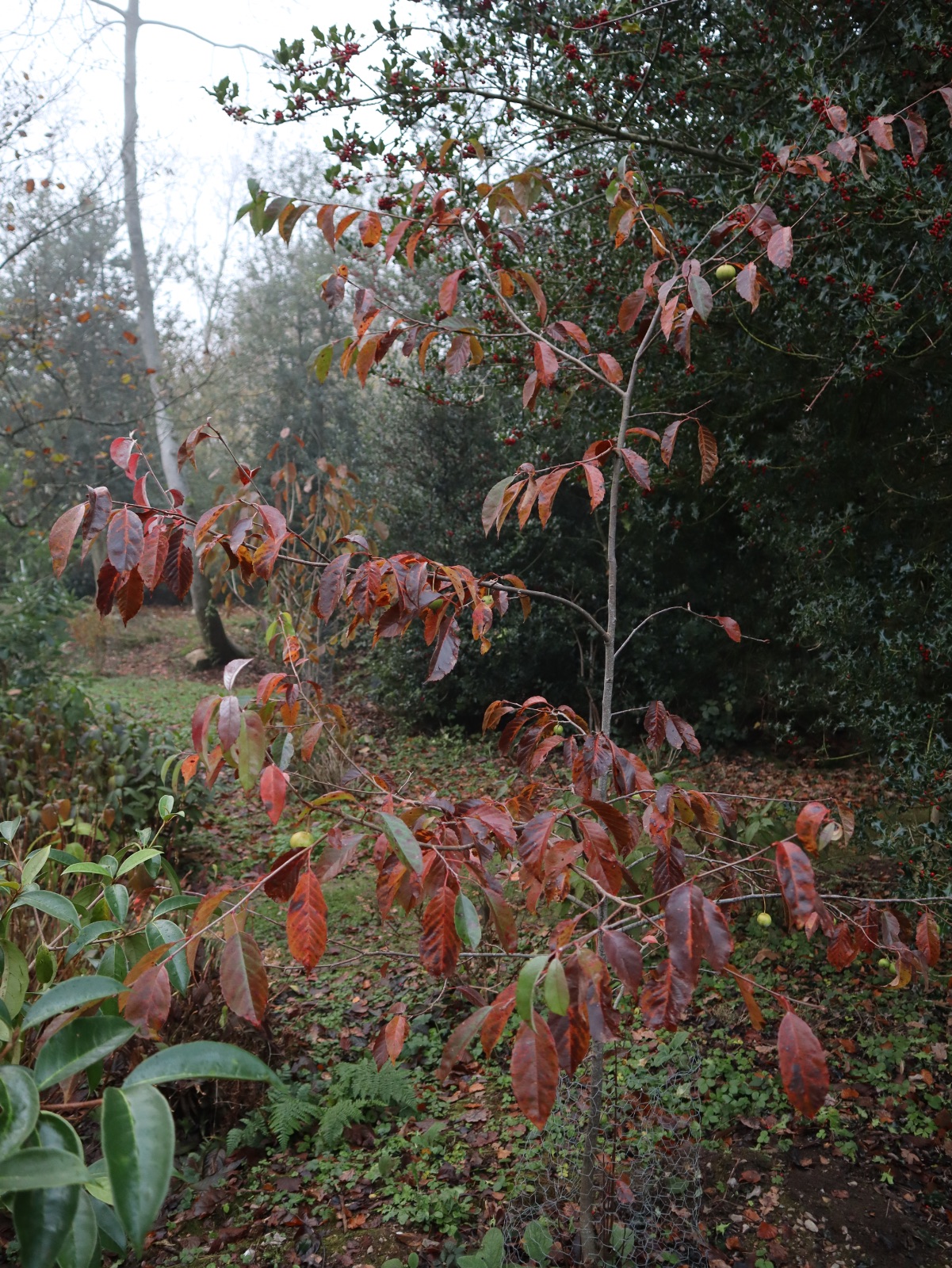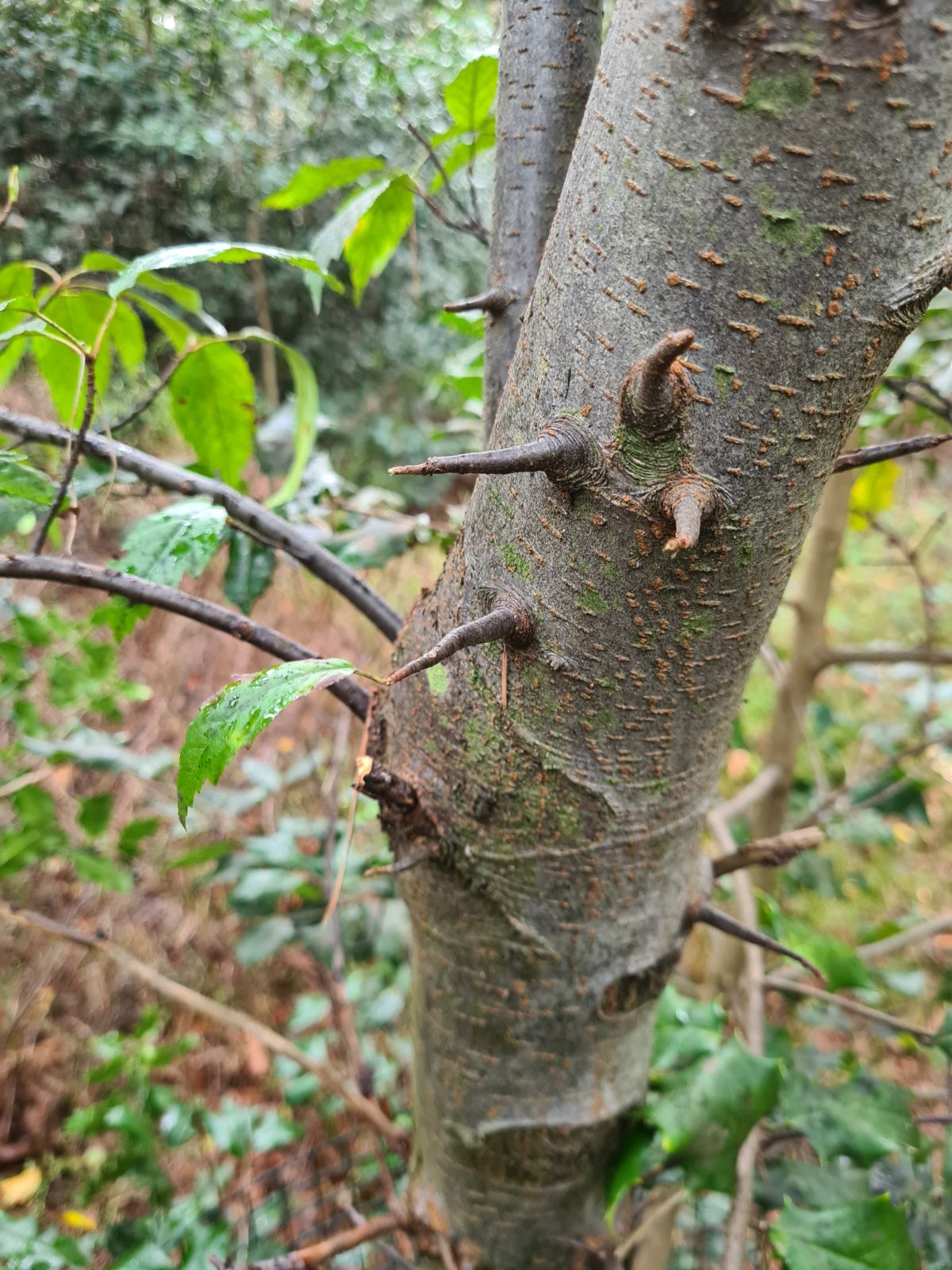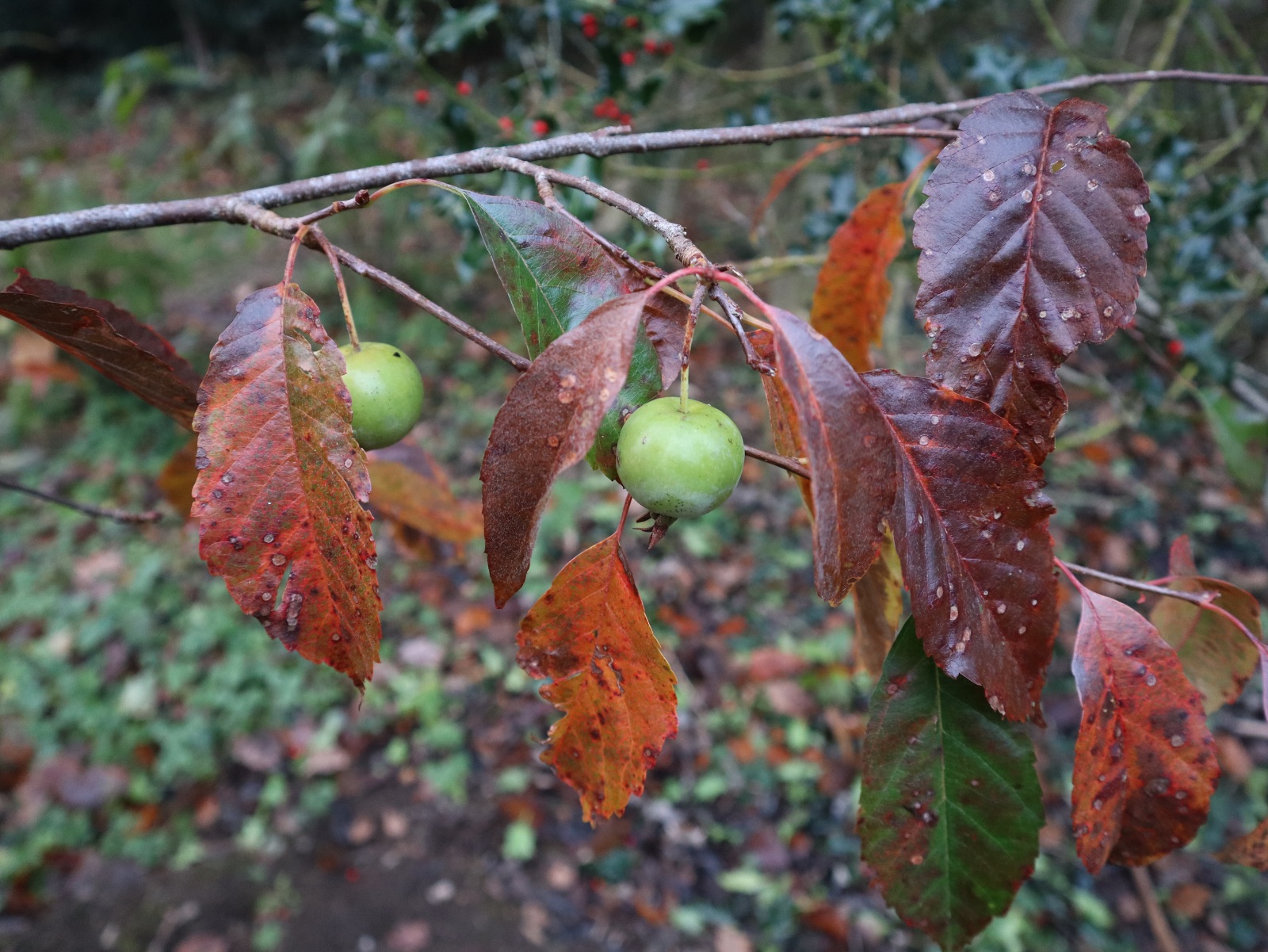Malus doumeri
Sponsor
Kindly sponsored by
Francine: 'after many informative Tours and Study Days with the IDS I feel it only fitting to help and promote such a wonderful organisation'
Credits
Julian Sutton (species), Nick Dunn (cultivars) (2021)
Recommended citation
Sutton, J. & Dunn, N. (2021), 'Malus doumeri' from the website Trees and Shrubs Online (treesandshrubsonline.
Genus
Synonyms
- Docynia doumeri (Bois) C.K.Schneid.
- Malus formosana (Hayata) Kawak. & Koidz.
- Malus laosensis (Cardot) A. Chevalier
- Malus melliana (Hand.-Mazz.) Rehder
- Malus leiocalyca S.Z. Huang
- Pyrus doumeri Bois
Other taxa in genus
- Malus × adstringens
- Malus angustifolia
- Malus × arnoldiana
- Malus asiatica
- Malus × astracanica
- Malus × atrosanguinea
- Malus baccata
- Malus bhutanica
- Malus × brevipes
- Malus chitralensis
- Malus coronaria
- Malus crescimannoi
- Malus Cultivars A-B
- Malus Cultivars C
- Malus Cultivars D-F
- Malus Cultivars G-I
- Malus Cultivars J-K
- Malus Cultivars L-M
- Malus Cultivars N-Q
- Malus Cultivars R
- Malus Cultivars S
- Malus Cultivars T-Z
- Malus dasyphylla
- Malus × dawsoniana
- Malus domestica
- Malus florentina
- Malus × floribunda
- Malus fusca
- Malus × gloriosa
- Malus halliana
- Malus × hartwigii
- Malus × heterophylla
- Malus honanensis
- Malus hupehensis
- Malus ioensis
- Malus kansuensis
- Malus kirghisorum
- Malus komarovii
- Malus × magdeburgensis
- Malus × micromalus
- Malus × moerlandsii
- Malus montana
- Malus ombrophila
- Malus orientalis
- Malus × platycarpa
- Malus praecox
- Malus prattii
- Malus prunifolia
- Malus × purpurea
- Malus × robusta
- Malus rockii
- Malus Rootstock Cultivars
- Malus Rosybloom Cultivars
- Malus × scheideckeri
- Malus sieversii
- Malus sikkimensis
- Malus × soulardii
- Malus spectabilis
- Malus spontanea
- Malus × sublobata
- Malus sylvestris
- Malus toringo
- Malus transitoria
- Malus trilobata
- Malus tschonoskii
- Malus turkmenorum
- Malus yunnanensis
- Malus × zumi
Small to medium tree, to 15 m. Branchlets grey-brown or purple-brown, hairy only when young; buds reddish purple, ovoid, pubescent at least along scale edges. Leaf blade narrowly elliptic-ovate or obovate-lanceolate, 9–15 × 4–6.5 cm, both surfaces white tomentose when young, becoming glabrous; base rounded or cuneate, apex acuminate, margin with irregular, sometimes very large teeth; petiole 1.5–3 cm, tomentose only when young. Inflorescence a 4–5-flowered, umbel-like corymb, 3–5 cm diameter; pedicels 1.5–3 cm, white tomentose. Flowers 2.5–3 cm across, May in China, March in California; hypanthium campanulate, prolonged into a short tube at apex; sepals ovate or lanceolate, ~8 mm, tomentose on both surfaces, persistent; petals white. obovate, 1–2 cm; stamens unequal slightly shorter than the petals; styles 4–5, longer than stamens, long-tomentose at the bases. Fruit yellow to red, globose, 2.5–5.5 cm in diameter, flesh with stone cells; August-September (China). (Gu et al. 2003).
Distribution China Guangdong, Guangxi, Guizhou, Hunan, Jiangxi, Yunnan, Zhejiang Laos Vietnam Taiwan
Habitat Forests, 1000–2000 m asl.
USDA Hardiness Zone 5-9
RHS Hardiness Rating H6
Conservation status Data deficient (DD)
Malus doumeri is the most southerly occurring member of the genus. It is an upland tree ranging from south eastern China and Taiwan south to southern Vietnam, well into the tropics. Remarkably hardy forms are in cultivation, albeit rarely encountered. These have proved attractive, with red-flushed young leaves (like so many broadleaves of similar distribution), deeply toothed on non-flowering shoots and persisting well into winter, hawthorn-like flowers, and significantly sized, edible fruits.
Bois (1904) first described it from specimens collected from a tree of 1.2 m girth, with long, erect branches, growing at 2000 m on Lang Biang, central Vietnam. Keith Rushforth (pers. comm. 2020) notes that this corresponds to a zone of mesic forest where Acer heptaphlebium reaches 25 m. Bois’ specific epithet commemorates Paul Doumer, mathematics professor and colonial era Governor-General of French Indochina. We follow Flora of China (Gu et al. 2003) in including the less tropical M. melliana (Hand.-Mazz.) Rehder from mainland China and M. formosana (Hayata) Kawak. & Koidz. from Taiwan, as well as M. laosensis (Cardot) A. Chevalier in a broadly-drawn concept of M. doumeri, but this is far from the last word on a poorly understood complex. It is cultivated across its native range as a rootstock for apples; in Guangdong the wild fruits are eaten fresh and used for drinks (Hanelt 2001; Gu et al. 2003).
First named as a Pyrus on account of stone cells in the fruit pulp, the fruit is apple-like in appearance, but without a depression at the apex. Its place in Malus is not at all clear. In many ways the flowers resemble those of Docynia, although they have only one or two ovules per locule, as in Malus. Even so, a few contemporary sources treat it as Docynia doumeri (Royal Botanic Gardens, Kew 2020). It has been included in too few molecular studies for any sensible inference to be drawn (Li et al. 2012).
M. doumeri is cultivated in our area only in the most experimental way. Cédric Basset introduced seed collected at 2055 m in Taiwan during 2006 (TW 2272) and has tested the resulting trees in several parts of France. They have survived undamaged –18ºC and deeply frozen ground in the Vosges (Basset 2012). Grafts from this stock are sometimes offered commercially (Pépinière AOBA 2020). Another Taiwanese collection (Howick, MacNamara & Crombie 2614, of 2004) is grown at RBG Edinburgh, although not in a public area (Royal Botanic Garden Edinburgh 2020) and at Quarryhill Botanical Garden, CA, where it has flowered (Quarryhill Botanical Garden 2020). Keith Rushforth has raised seedlings of both Jiangxi and Taiwanese provenance to flowering size in Devon, UK. The Taiwanese trees, which have reached about 6 m, have fewer stamens (K. Rushforth pers. comm. 2020). Specimens of Chinese provenance, dating from the late 1980s, are grown at the Belmonte Arboretum, the Netherlands, and the David C. Lam Asian Garden, Vancouver (Belmonte Arboretum 2020; University of British Columbia 2020). It is grown US National Clonal Germplasm Repository, Geneva, NY and Corvallis, OR, from a Taiwanese collection (USDA/ARS, National Genetic Resources Program 2020); Vietnamese provenance material is being sought for its potential in breeding apples for warm climates (Volk 2018).
Malus leiocalyca S.Z. Huang, from southern China, is sometimes treated as distinct (Gu et al. 2003). It has glabrous rather than tomentose pedicels, hypanthium and sepal undersides.

